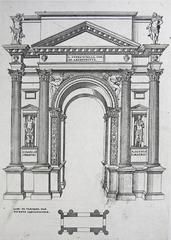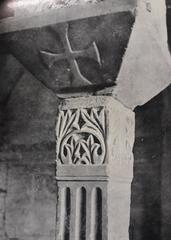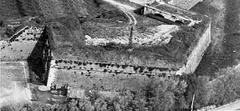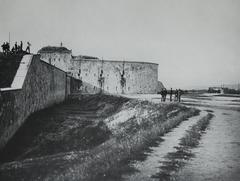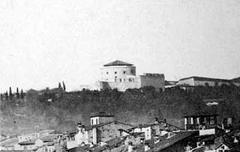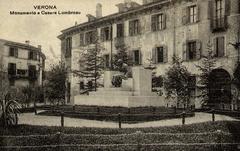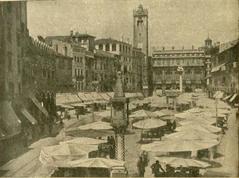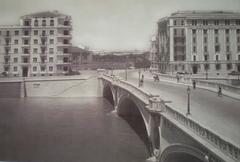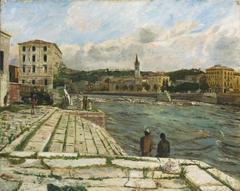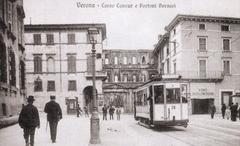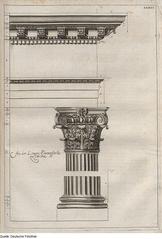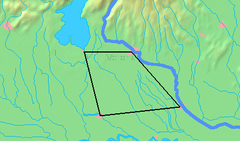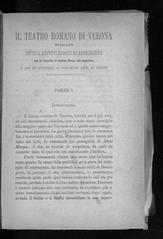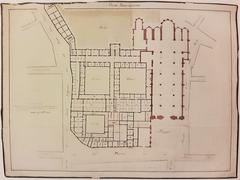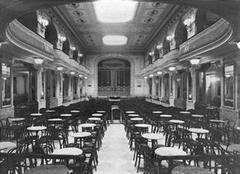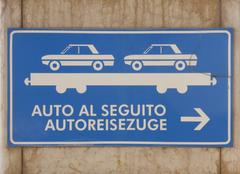Comprehensive Guide to Visiting Verona Arena, Verona, Italy
Date: 16/07/2024
Introduction
Discover the marvel of the Verona Arena, an ancient Roman amphitheater located in Piazza Bra, Verona, Italy. Constructed in 30 AD during the reign of Emperor Octavian Augustus, this monumental structure stands as a testament to history and culture. Built using white and pink limestone from Valpolicella, the Verona Arena originally featured three tiers of arches and could accommodate up to 30,000 spectators, making it one of the largest amphitheaters of its time (History Hit). Over centuries, it has evolved from hosting gladiatorial contests to becoming one of the world’s premier venues for opera performances. Today, the Verona Arena is celebrated for its summer opera season, known as the Arena di Verona Opera Festival, attracting over 500,000 visitors annually (Wikipedia). This comprehensive guide will delve into the arena’s rich history, cultural significance, and provide practical visitor information such as ticket prices, visiting hours, travel tips, and nearby attractions.
Table of Contents
- Introduction
- History and Significance of Verona Arena
- Modern Use and Cultural Significance
- Visitor Information
- Economic and Cultural Impact
- Technological Advances and Future Prospects
- FAQ
- Conclusion
- Call to Action
History and Significance of Verona Arena
Construction and Early Use
The Verona Arena, a Roman amphitheater located in Piazza Bra, Verona, Italy, was constructed in 30 AD during the reign of Emperor Octavian Augustus. This monumental structure was built using white and pink limestone from Valpolicella, a material choice that contributed to its enduring beauty and resilience. The arena originally featured three tiers of arches, although only two tiers have survived to the present day (History Hit).
In its prime, the Verona Arena could accommodate up to 30,000 spectators, making it one of the largest amphitheaters of its time, surpassed only by the Colosseum in Rome and the Campania Amphitheatre in Capua (Britannica). The elliptical design of the arena provided excellent acoustics and sightlines, ensuring that spectators could fully engage with the events taking place in the central arena.
Gladiatorial Games and Public Spectacles
The Verona Arena was initially used for gladiatorial contests and other public spectacles, including animal hunts and executions. These events were a significant part of Roman culture, drawing large crowds from Verona and beyond. The word “arena” itself is derived from the Latin word for sand, which covered the floor to absorb the blood spilled during these brutal contests (The Culture Trip).
Medieval and Renaissance Periods
Following the decline of the Roman Empire, the Verona Arena continued to be a focal point for public entertainment. During the Middle Ages, it hosted jousts and tournaments, which were popular among both local knights and foreign participants. The arena also featured exotic animal exhibits, including a notable display of a rhinoceros in 1751 (The Culture Trip).
In the Renaissance period, the arena began to be used for operatic performances, capitalizing on its excellent acoustics. This transition marked the beginning of the arena’s long association with the performing arts, which continues to this day (History Hit).
Earthquake and Restoration
A significant earthquake in 1117 caused extensive damage to the Verona Arena, particularly to its outer ring. Much of the stone from the outer ring was repurposed for other building projects in Verona, leaving only a small section, known as the “ala” or wing, intact (Wikipedia). Despite this damage, the arena remained a prominent feature of the city and continued to attract visitors.
Restoration efforts in the 19th and 20th centuries have helped preserve the arena for future generations. Advances in technology, such as 3D laser scanning and computer modeling, have provided new insights into the arena’s original design and acoustics, guiding these restoration efforts (History Tools).
Modern Use and Cultural Significance
Today, the Verona Arena is renowned for its summer opera season, which began in 1913 with a performance of Giuseppe Verdi’s “Aida” to celebrate the centenary of the composer’s birth. This annual event, known as the Arena di Verona Opera Festival, has become one of the most prestigious opera festivals in the world, attracting over 500,000 visitors each year (Wikipedia).
The arena’s capacity has been reduced to 22,000 spectators to ensure safety and comfort, but it remains one of the largest open-air opera venues globally (History Hit). The festival features a diverse program of operas, ballets, and concerts, with performances by some of the world’s most renowned artists (Arena di Verona).
Visitor Information
Ticket Prices and Visiting Hours
To visit the Verona Arena, it’s recommended to check the official website for the latest ticket prices and visiting hours. Generally, the arena is open daily from 8:30 AM to 7:30 PM, but hours may vary on performance days. Tickets can be purchased online or at the venue, with discounts available for students and seniors (Arena di Verona).
Travel Tips
When planning your visit, consider booking a guided tour to gain deeper insights into the arena’s history and architecture. Comfortable walking shoes are recommended due to the uneven terrain. Additionally, visiting early in the morning or late in the afternoon can help you avoid the crowds.
Nearby Attractions
While in Verona, don’t miss other historical sites such as Juliet’s House, Castelvecchio, and Piazza delle Erbe. Each of these locations offers a unique glimpse into Verona’s rich cultural heritage.
Accessibility
The Verona Arena is committed to being accessible to all visitors. Ramps and designated seating areas are available for individuals with mobility issues. For more detailed information, check the official website or contact the venue directly.
Special Events and Guided Tours
The arena hosts a variety of special events throughout the year, including opera festivals, concerts, and even guided tours that offer behind-the-scenes access. Check the official website for the latest schedule and event details.
Photographic Spots
For the best photos, visit the arena during the golden hour, just after sunrise or before sunset. The warm light enhances the beauty of the limestone, making for stunning pictures.
Economic and Cultural Impact
The Verona Arena is more than just an ancient monument; it is a vital part of Verona’s identity and cultural heritage. The arena’s image is ubiquitous in the city, appearing on everything from street signs to souvenirs. It is also a major driver of Verona’s tourism industry, drawing millions of visitors each year and significantly contributing to the local economy (History Tools).
The influx of tourists has helped support the preservation of Verona’s many historical sites and artistic treasures. The arena’s continued use for cultural events ensures that it remains a living part of the city’s cultural landscape, rather than a static relic of the past (Timeless Travel Steps).
Technological Advances and Future Prospects
Recent technological advances have further enhanced the understanding and preservation of the Verona Arena. Techniques such as 3D laser scanning and computer modeling have revealed previously unknown details about the arena’s construction and original appearance. These insights have been invaluable in guiding ongoing restoration efforts and ensuring that the arena remains structurally sound and historically accurate (History Tools).
Looking to the future, the Verona Arena is poised to continue its role as a premier venue for cultural events. The commitment to careful stewardship and innovative preservation efforts will ensure that this extraordinary monument continues to inspire and delight visitors for generations to come (History Tools).
FAQ
What are the visiting hours for Verona Arena? The Verona Arena is generally open from 8:30 AM to 7:30 PM, but hours may vary on performance days. Check the official website for the latest information.
How much are tickets for Verona Arena? Ticket prices vary depending on the type of visit and any discounts available. It’s best to consult the official website for current pricing.
Is the Verona Arena accessible to people with disabilities? Yes, the arena has ramps and designated seating areas for individuals with mobility issues. Contact the venue for more details.
What are some nearby attractions to visit? Nearby attractions include Juliet’s House, Castelvecchio, and Piazza delle Erbe, all offering unique insights into Verona’s history.
Conclusion
The Verona Arena stands as a testament to the enduring power of human creativity, ingenuity, and passion. From its origins as a venue for gladiatorial games to its current status as a world-renowned opera house, the arena has witnessed nearly 2,000 years of history. Its continued use and preservation are a tribute to the timeless beauty and resilience of the human spirit, making it a must-visit destination for anyone interested in history, architecture, or the performing arts (History Tools).
Call to Action
To stay updated on the latest events and visiting information, download our mobile app Audiala, check out our other related posts, or follow us on social media.
References
- History Hit. Verona Arena - Construction and Early Use. Retrieved from History Hit
- Britannica. Verona Arena. Retrieved from Britannica
- The Culture Trip. A Brief History of the Verona Arena. Retrieved from The Culture Trip
- Wikipedia. Verona Arena. Retrieved from Wikipedia
- History Tools. Verona Arena - A Monument to Roman Grandeur and Living History. Retrieved from History Tools
- Timeless Travel Steps. Verona Arena - History, Facts, Medieval Marvel. Retrieved from Timeless Travel Steps
- Fortheloveofwanderlust. Unveiling the Magic - Your Ultimate Guide to the Verona Opera Experience. Retrieved from Fortheloveofwanderlust
- Arena di Verona. Opera Festival Calendar. Retrieved from Arena di Verona
- Concert Archives. Arena di Verona Concerts. Retrieved from Concert Archives
- Veronikas Adventure. Verona Arena and Historic Highlights - A Guided Walking Tour. Retrieved from Veronikas Adventure

